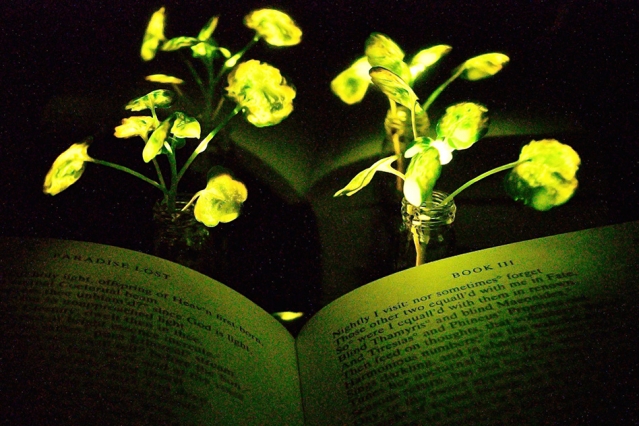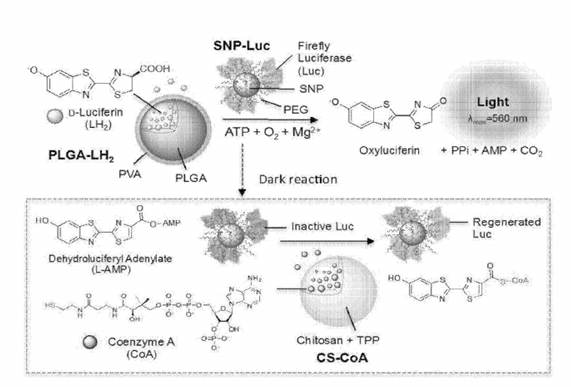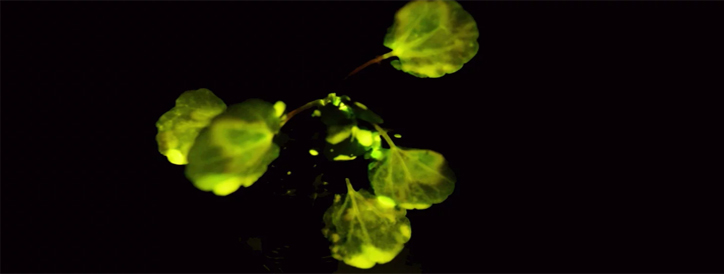Imagine, wouldn’t it be cool if you could read in the dark with the help of light from a plant on your desk instead of turning on a desk lamp?
MIT engineers lead by Michael Strano, Professor of Chemical Engineering, have turned this thought into reality.

PATENTED TECHNOLOGY
A recently published patent from MIT engineers talks about light-emitting plants. These glowing plants are made to glow using chemicals and enzymes responsible for glowing of fireflies. The chemicals are injected into leaves of plants. The chemicals react, taking energy from the metabolism of the plant, and give the required glow to the plants.
Technical Details
The complex process of creating such glowing plants includes packaging three chemicals – luciferase enzyme, luciferin compound, and a coenzyme A into different types of nanoparticles of different size. Luciferase enzyme acts on luciferin compound and leads to bioluminescence. Co-enzyme A aids luciferase action by removing any bi-products that inhibit luciferase action.
Then, all of the three chemicals are delivered to the plant through a composition of the nanoparticles by mixing the composition with water in a chamber. Then, the plant is placed in the chamber, and an appropriate pressure of at least 1.8 bar is applied to deliver the nanoparticles with the enzymes into the plant through stomata (micro-pores on the leaves of the plant).
Nanoparticles with luciferin and coenzyme A are delivered just outside the mesophyll (inner tissue) of the leaf, and nanoparticles with luciferase are delivered into the cells of the mesophyll. The luciferin and coenzyme A are then absorbed into the cells of the mesophyll, the luciferase acts on the luciferin, and the plants begin to glow.

The engineers have also developed a way to turn off the luminescence. A strong luciferase inhibitor (dehydroluciferin) is used to deactivate the luciferase enzyme. The luciferase enzyme is then reactivated by thiolytic reaction using the coenzyme A.
MIT engineers are often inspired by nature. The glowing plants use a mechanism similar to fireflies. Here is another patent from MIT that uses flight patterns of birds to autonomously locate target objects.
Applications
This technology, funded by the US Department of Energy, shows loads of promise and potential. The plants once injected with enzymes, are able to glow for 4.5 hours at a stretch. That might not seem like a long time, but the engineers are working on improving this time.
The most obvious use of the tech would be as small light sources, like table lamps and night lamps. These glowing plants may also open up new avenues in interior decoration.
The researchers and engineers also wish to develop a method to spray or paint these nanoparticles on trees, transforming them to light sources, like street lamps.
As global demands for energy increase, the stress on world governments to find and implement newer sources of energy is also increasing. Currently, lighting takes up almost 20 percent of the world’s electricity. To meet the ever-growing demands of energy, newer sources of energy that take the stress away from existing sources are being realized, much like this innovation from MIT.
Publication Number: US20180317415
Patent Title: NANOBIONIC LIGHT EMITTING PLANTS
Publication date: 2018-11-08
Filing date: 2018-05-02
Inventors: Michael S. STRANO; Seongyeon KWAK; Juan Pablo Giraldo GOMEZ; Min Hao WONG;
Original Assignee: MASSACHUSETTS INSTITUTE OF TECHNOLOGY
US20180317415

